A couple of weeks ago, we concluded playing through the Darkening of Mirkwood for the One Ring. I was the Loremaster. And by and large, it was amazing. I have lots of feelings, and I’m still not completely sure how we made it work. But with dedication, and outright enthusiasm, we did it!
The game was divided into seasons of a few sessions each, with breaks in between. Three players made it through all eight seasons. Heroes! We had other players joining us for a few seasons, but not here for everything. They made this game too.
So thanks to Dom (Nali the Mason), Elina (Aeldra the Kind), Glen (Eorgwyn the Shieldmaiden), Jag (Miriel, Warden of Mirkwood), Jerry (Halbrog the Dunedain), Mik (Hathus the Wanderer), Richard (Rathar Broadshoulders), Simon (Nolwe of Rivendell).
I loved feeling the way the player characters shaped the world. They were proactive, cunning, and sometimes, it must be said, lucky. I also felt myself becoming a massive fan of the player characters. I could imagine them as well as any character in fiction.
There were notable high points. Some which stood out to me were:
Defeating two of the Great Spiders of Mirkwood by setting them fighting each-other.
The bleak and gruelling march to Angmar in which excess armour was discarded. The kidnapped children were rescued, but the quest to seek out the evil behind it all left for another day.
Miriel taking the werewolf spirit into herself.
Gathering a grand alliance to assault Dol Goldur, and end its evil… for ever?
The end of the campaign was triumphant, but the cost was immense, and there was much underlying sadness. Dom summed it up beautifully here.
Last week, we were lucky enough for the four of us there at the end to get together at the Furnace RPG Convention, to toast a fine game and absent members of the Fellowship.

So what next? This was one of the finest campaigns I’ve been able to GM. At the end I feel happy, but a little overwhelmed. Maybe the Fellowship will get together for a special meeting to take on a dragon mentioned in the Grey Mountains. I hope so!
My main thought is what a wondrous thing can be possible with an amazing and dedicated group. It’s going to be a long time before I manage to rival it. But part of the fun in gaming is trying!
And for now I’m more than ready to play rather than GM, which is another pleasure.
In celebration, here’s the chronicle of events. There were departures from the “official campaign”. One key thing was an element I introduced – the Gibbet thing. Material involving the Bardings were not included. The remainder came from the players following their own path, making decisions big and small, and being…glorious!
Autumn 2947: The Company sets out from Dale, following King Bard’s mission of spreading the word of the Council of the North next Autumn. Crossing Mirkwood, they learn the truth about Mogdred from a mad hermit, namely that Ingold is Mogdred
The Company spend winter in the Beorning lands before travelling to the Woodsman lands in spring.
Spring 2948: The Company tells Ingomer, chieftain of the Woodsmen, the truth about Mogdred. They then travel into the forest to confront Mogdred. Aeldra the kind forces a realisation of who he was in a one on one fight.
Mogdred leads his men to fight orcs in Mirkwood, driving them out from the nearby area.
Mogdred attends the Council of the Woodsmen, and the Company convinces the sceptical Woodsmen to accept him as one of their number, and Mogdred’s fortress at Tyrant’s Hill as one of the Woodsmen holdings.
Summer 2948: Nali finds a mission from the dwarf Bofri son of Bombur. At Nali’s urging, the Company travel the old dwarf road through Mirkwood, and exorcise the Beacon Tower half-way through of its ghosts, retrieving the staff of the Roadwarden. Bofri the dwarf begins his work on restoring the dwarf road.
Autumn 2948: The Company cross Mirkwood, encountering the great spider Tauler, child of Ungoliant. They discover the East Bight is beset by Barrow Wights, and the lord of the East Bight, Ceawin the Generous, under the mental thrall of one of the Nazgul. They help him break free.
King Bard’s Great Council of the North discusses affairs of the free northern kingdoms, possible threats, and renews bonds of friendship between Dale, the Lonely Mountain, the Woodsmen, the Wood Elves, and the Beornings. The dwarf Nali presents King Dain of the dwarves with the Staff of the Roadwarden to give to Bofri.
The Company send word to the wizard Radagast about the Nazgul and the Barrow Wights, and talk to the Council of the North. They are advised that to defeat the Barrow Wights, they must find the barrow of their chief, and expose it to the sun. Radagast finds the location of the barrow the Company seeks, and leaves to consult with the wizard Saruman about the Nazgul.
The chief of the elven king’s hunters, Ruithel, goes missing seeking Tauler.
Winter 2948/49: Mogdred’s forces defeat an attack by orcs on the southern flank of the Woodsmen realm. Viglunding raiders attack Beorn’s lands, capturing slaves and burning the Elfwood, taking control of the western end of the elf path through Mirkwood.
Spring 2949: The Company bargain for the release of Ruithel from dwarves exiled from the Grey Mountains. They gain forces from the Woodsmen, and 50 elven archers for the Beornings to attack the Viglundings.
Summer 2949: The Company goes to the Viglunding lands to rescue the slaves taken prisoner- including Rathar’s associate Gisalric, and Frar the Beardless, chieftain of the dwarf exiles. The Beornings then go to war. Rathar kills the Viglunding chief, Viglund, in single combat. The Viglundings will no more be a threat, their very name to be forgotten.
And Rathar retires from adventuring with a steading in the borderlands to the north of the Beorning country, a reward for his efforts.
The Company decides to travel to the East Bight in spring to deal with the Wights. Perhaps they will find a group to journey with then (which they won’t in the Autumn), and not have a tough time crossing Mirkwood again.
Winter 2949/2950: The Wise and those touched by Shadow have dark dreams. The Dark Lord Sauron, the Necromancer as he was known when in Mirkwood, has risen again in Mordor.
Spring 2950: The Company sets off across the Narrows of the Forest for the East Bight. On the way, they discover the waters of Black Tarn and one of the River Maidens is corrupted by the influence of one of the Great Spiders, Tyulquin. To free Black Tarn from the blight, they seek out Tyulquin’s rival, Tauler, who after considerable persuasion leads the Company to Tyulquin’s lair. He will, with their cooperation, slay Tyulquin.
There, Tauler and Tyulquin fight, and Tauler is slain. The Company finish off the wounded Tyulquin, and with two of the three Great Spiders of Mirkwood dead, retreat to their new sanctuary in central Mirkwood, the dwarven Beacon Tower.
Summer 2950: While in the Beacon Tower, the Company join an elven celebration held by Orophal the Harper and Ruithel the Hunter. Both are wounded but happy. They celebrate killing the Werewolf of Mirkwood, and celebrate still more when they hear of the Company’s deeds with the Great Spiders. But the Werewolf returns in another body. The Company dispatch it, and explore the werewolf’s lair. They find the remains of one of the two Great Lamps of Balthi, which once shone with a light of the ancient world. The other of these lamps shines in Woodland Hall, in a secret chamber.
The Company, pursued by the Werewolf, reformed again, and accompanying wargs. travel with the wounded elves to Marshfoot, where the elves take a boat to the Woodland Realm. The Company caution the elves not to mention the other lamp in Woodland Hall.
Autumn 2950: The Company reach East Bight, and receive cryptic warnings in dreams of a coming attack by orcs and perhaps more. Aeldra the Kind slays the Wight King, ending the wight threat to the people of East Bight.
Winter 2950/2951: One of the Nazgul, a messenger, visits Mogdred of Tyrant’s Hill to claim his alliance to the dark lord. Mogdred and his men drive off the messenger with arrow fire.
Spring 2951: War comes to East Bight…a force of orcs from the east, and orcs from the forest, attacking from the west. A Nazgul is also present, and calls the wights. East Bight should be overwhelmed.
But the Company have not been idle. The wights do not march despite the Nazgul’s call; their king was slain, and the horn aiding their summoning was not blown. The Company also journeyed over winter to the Lonely Mountain and the Woodland Realm; forces of elves and dwarves march to help the East Bight, and Thranduil gives to Miriel a war banner from the time of Gil Galad.
The war banner drives away the Nazgul despite Nali the Dwarf being grievously affected by the Black Breath. The forces of Men, Elves, and Dwarves defeat the orcs and trolls, with Nali slaying the orc leader, a Great Orc and heir to Azog and Bolg.
Summer 2951: Radagast the Brown returns from a visit to the necromancer’s old fortress of Dol Guldor and hence to Saruman the White in Isengard. Radagast reports to the Company that forces are moving to reoccupy the Necromancer’s old fortress, including at least one of the Nazgul. And there is a traitor among the Wood Elves. Further, the Necromancer’s torturer, the Gibbet King, has returned to make mischief somewhere north of the Misty Mountains.
Miriel tells King Thranduil about the Lamp of Balthi. Unknown to Miriel, he sends a group, led by Ruithel, to steal it from Woodland Hall.
Autumn 2951: The Company travel to the old kingdom of Éotheod chasing rumours of the Gibbet King. Miriel has a vision alerting her to what the elven king has done. She tells the Company; Nali in particular is unhappy and sends a raven to alert the Woodsmen.
They find some of the Hillmen to be the Gibbet King’s followers, and orcs strike to kidnap the children of those who don’t follow him. The Company pursue the orcs all the way to Angmar, and catch them almost within sight of Carn Dûm. They take the children back to Rivendell. On the way they meet a group of elves and rangers, including Ruthiel who abandoned her mission and learned where the Company went.
Spring/Summer 2952: The Company, hearing rumours of conflicts between the Wood Elves and Woodsmen cross the Misty Mountains from Rivendell. The High Pass is blocked, but the Redhorn Gate is passable, and they come into the Dimrill Dale. They find a dwarven tower at the edge of the dale, Durin’s Watch, occupied by wraiths.
In the Woodsmen lands, the heroes negotiate with the Woodsmen and Elves, and learn that Ormal the Lampmaker, the greatest practitioner of wood elf magic, believes he can rekindle the broken lamp of Balthi given access to the still functioning lamp that still hangs in Woodland Hall.
A compromise is struck; the wood elves will not take the lamp, but rather Ormal will study it in Woodland Hall, watched.
The heroes also learn that the Nazgul and a group of orcs are nearby. With the aid of Ragagast, they rout three of the Nazgul, destroying their material forms for now.
Summer/Autumn 2952: The heroes journey south, to see Saruman to ask his advice on dealing with the Werewolf of Mirkwood and the Gibbet King. It’s a long journey, and on the way they clear a notable hazard on Hag Island on the river, and lay the wraiths of Dimrill Watch to rest. Halbrog declines to take a cursed sword from the treasure there.
They stop off in Gondor before heading across Rohan to Isengard. Saruman, after some persuasion, agrees to advise them. Halbrog agrees to become Saruman’s emissary, and the white wizard gifts him a ring he made. Miriel stays with Saruman for the winter to learn from him, and the other companions go home for the winter.
Saruman is able to tell the companions that he believes the Werewolf can be dispersed if the lamp of Balti is shone onto it immediately after its material form is slain, as long as no other wolves are nearby for the spirit to jump into. More research is needed on the Gibbet King, though Saraman does mention a sword in a wight’s horde on the Barrow Downs which might be of aid.
Winter 2952/2953: Halbrog meets Gandalf briefly in Bree. Gandalf seeks the Company’s aid on matters of importance, and will see them in Rivendell that Autumn. Until then, he has urgent business of his own. Wights have been seen outside the Barrow Downs!
Spring/Summer 2953: It is time for the Company to deal with the Werewolf of Mirkwood, who is running rampage around the eaves of Mirkwood, leading a pack of hundreds of wargs. The Comapany persuade the Woodsmen and Radagast to go along with their plan, taking the lamp of Balthi, and attacking the pack, while Radagast uses his magic to separate them.
The Company take on the Werewolf, defeat it, and Miriel shines the lamp of Balthi in its face. It begs the elf for mercy, but Miriel rather mocks it, refusing, seeing the spirit needs punishment. At which point the spirit of the werewolf jumps into Miriel! The wood elf is able to trap it for now within herself.
The group travel to see Beorn for help with Miriel’s problem. Beorn takes them into the misty mountains, where they see a mysterious hunter who takes away the werewolf spirit…and Beorn as well. The Company travel back to break the news to the Beornings and deal with the delicate issue of leadership.
On the way they sense one of the Nazgul in the distance and see a large force of orcs and trolls coming down from the Misty Mountains into Beorning lands. They bury most of the force with a carefully crafted landslide, and intend to fight the vanguard of the force who were ahead of the slide, but are forced to flee.
Autumn/Winter 2953: Halbrog leaves the Company to join Gandalf on a quest of some importance, where his expertise is needed to help the wizard.
Meanwhile, Nolwe, a high elf, comes from Elrond with news of a force marching on the Beorning lands from the North. It is led by the Gibbet King! The Company rally the Beorning forces to withstand the attack. The Gibbet King is defeated, but only vanquished until he can occupy s new body.
The Company travel to Rivendell to research the Gibbet King, and rest before setting off for the Barrow Downs for the Sword Estel, which can defeat the Gibbet King for good. And maybe other such foes. They retrieve the sword and head north again for Angmar, where they infiltrate the Gibbet King’s lair in Carn Dum, and end him for good.
They then flee the Gibbet King’s armies, but lead them into an ambush prepared by the rangers at Fornost, in the North Downs.
Early 2954: The Company spend the rest of the Winter in Rivendell recovering from the trauma of Angmar and the Barrow Downs. They learn that Dol Guldor in Mirkwood has been reoccupied by a host of orcs and other things, including at least three Nazgul, and research it. They are invited to the opening of the Dwarf Road at midsummer. Nali the dwarf discovers two prophecies, one warning of the wood elves’ wine, the other saying that both Ingomer, chieftain of the woodsmen, and Ingold, his son, formerly known as Mogdred will die within the year.
Spring 2954: One of the Nazgul comes to Tyrant’s Hill to demand Mogdred’s allegiance for the third and last time. Mogdred refuses.
Summer 2954: The Company travel to the Beacon Tower on the Dwarf Road to celebrate its opening. The elves of Mirkwood come and bring wine. Several notable dwarves are present, including Bofri, the Roadwarden. Bofri gives them much gold for their earlier work. The Company discover the wine the wood elves sent was poisoned, and prevent it being drunk. Ingold of Tyrant’s Hill is due to come, but late. A messenger from the party rushes to the Beacon Tower to declare Ingold and his soldiers have been attacked by a large force. The Company and others run to the rescue and prevail after a tough fight, in which Aeldra slays a Nazgul – for good?
Autumn 2954: The Company set off for the north. Aeldra and Nali persuade the dwarves to join the woodsmen in a march on Dol Guldor. Miriel and Nolwe persuade the elves. They also uncover the man who poisoned the wine, learn he was under the influence of the Shadow, and get there too late to question or save him. The Company reassemble, rescue the dwarf Frar the beardless, learn the last of the Great Spiders was behind Frar’s capture and intended trap for them, and the influence of the man who poisoned the wine. The march to the Mountains of Mirkwood to defeat her, and claim some ancient and powerful treasures.
The Company also learn from Frar of a dragon in the Grey Mountains and one of the Seven Rings of the dwarves.
Winter 2954: A miasma spreading from Dol Guldor causes widespread illness. Ingomer of the Woodsmen dies. Aeldra is declared chieftain of the woodsmen. She and Ingold decide they have much to talk about, possibly rekindling their old relationship, when this is over.
Spring 2955: An alliance of free peoples, including dwarves, elves, and men, marches on Dol Guldor. They prevail, but at great cost. Enemies include five(!) Nazgul, and the biggest mountain troll the Company has seen. In the battle, over 70% of the gathered forces fall. Dwalin dies fighting a Great Orc. Ingold falls at the hands of a troll. Miriel in a bout of madness slays the elf Ruthiel with an arrow. Horrified, she flees to dwell alone in the forest.
Aeldra decides to dedicate herself to the woodsmen. Nali returns to the Lonely Mountain in honour, though he dreams of the possibility Frar raised of become king in the Grey Mountains, and taking the Ring of Power. Nolwe urges the Company to meet in Rivendell in ten years time.
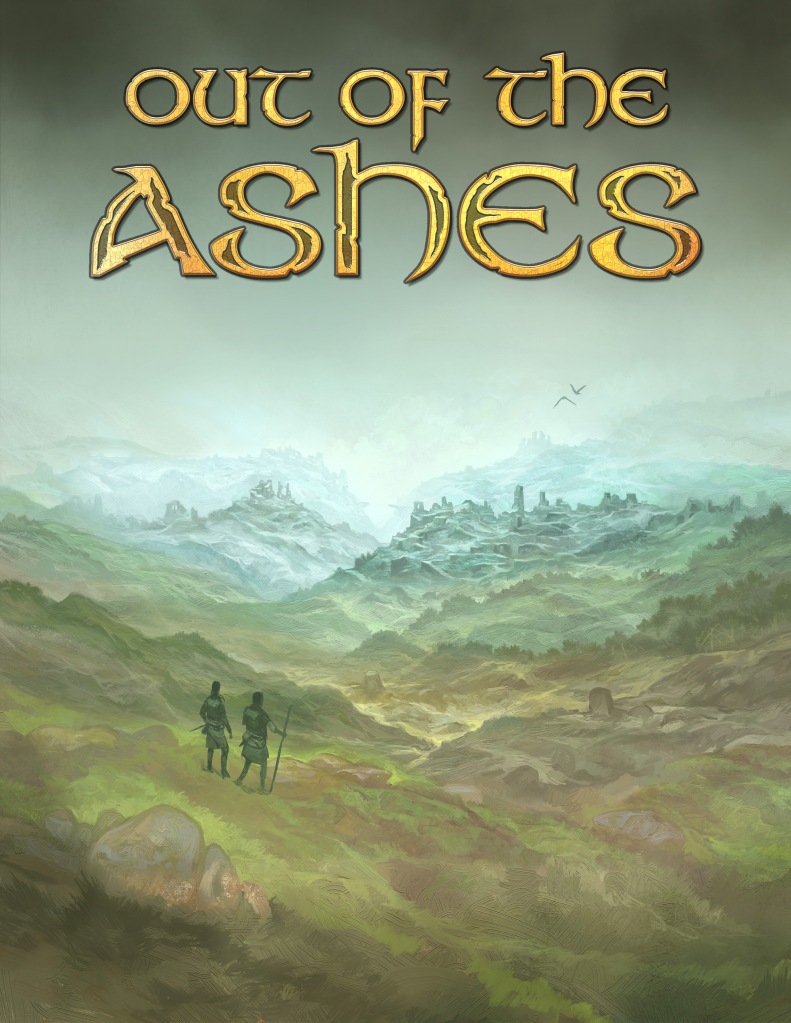
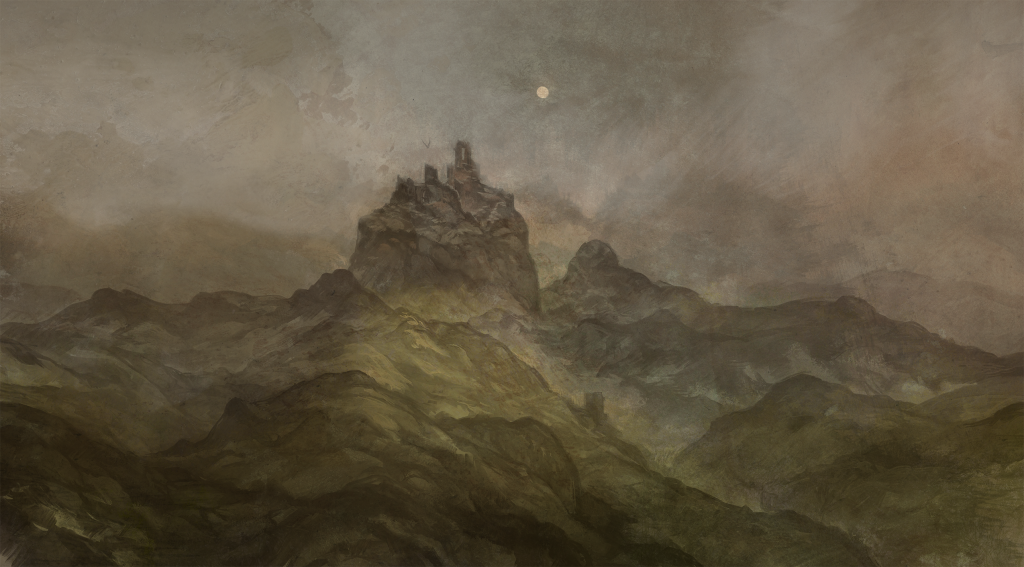
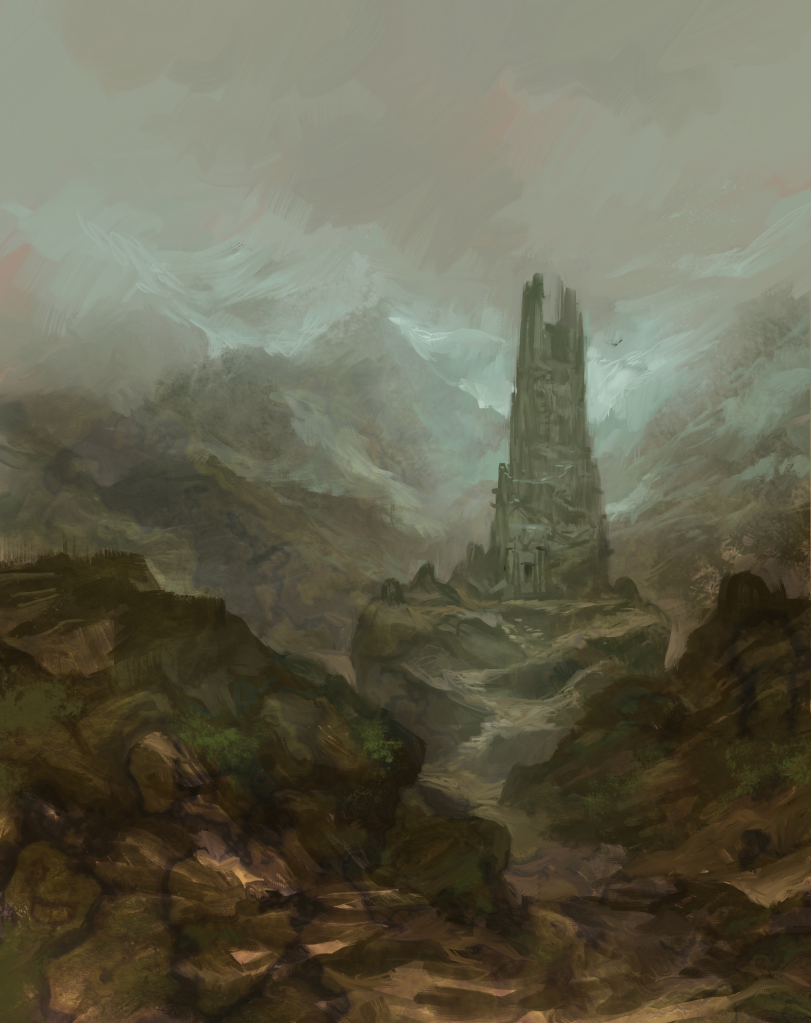
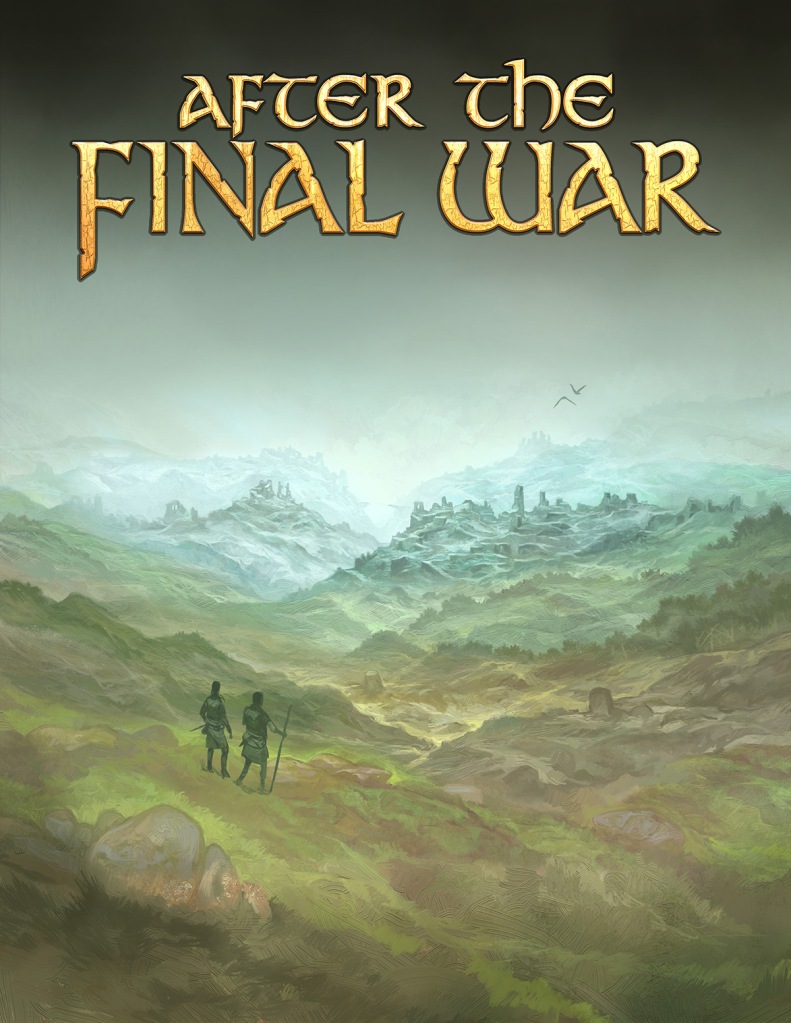


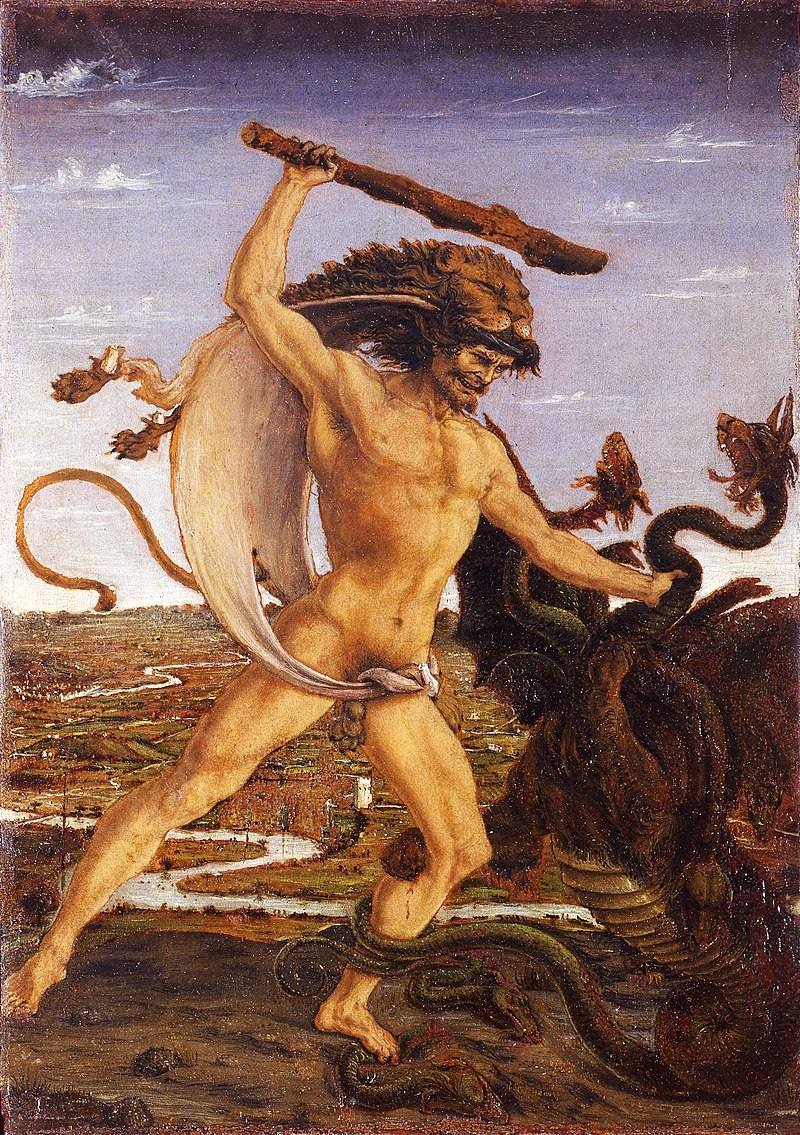
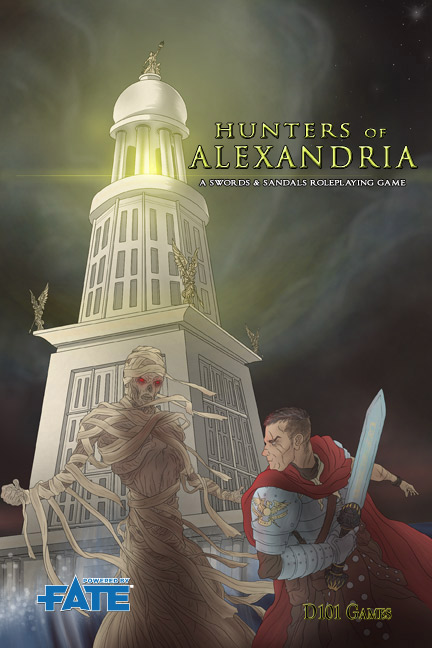
Recent Comments